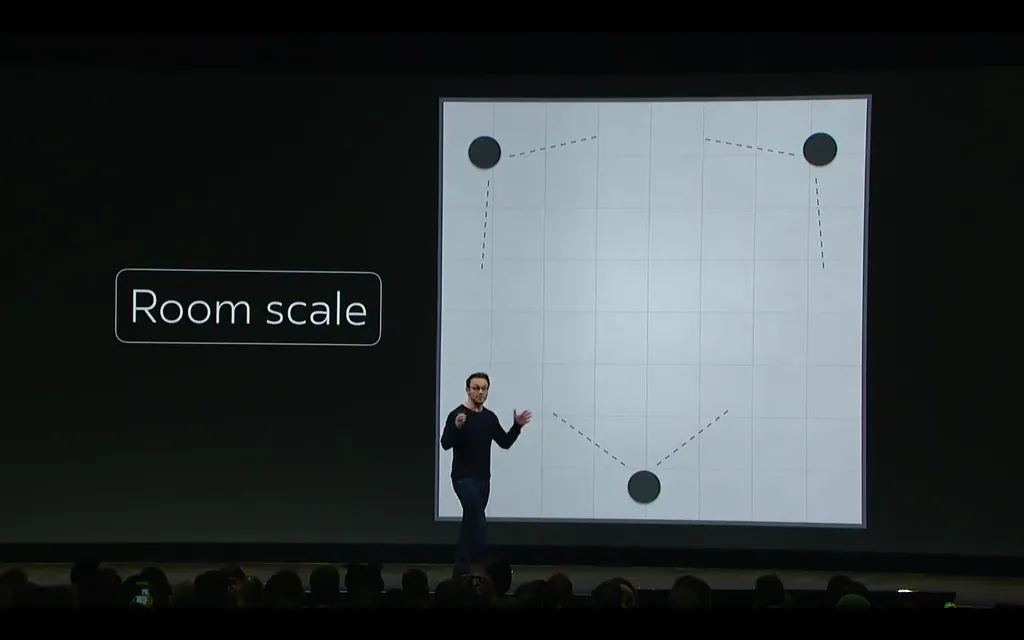Oculus CEO, Brendan Iribe, took the stage at Oculus Connect 3 today to discuss the future of his company and its Oculus Rift virtual reality headset. Part of his keynote included the official price and release dates for Oculus Touch — the long awaited hand-tracked controllers that have the potential to give the Rift parity with its biggest rival: the HTC Vive.
The Vive uses a system called “room-scale” to grant its users the ability to physically walk around a predetermined space in fully tracked VR. Almost as soon as the term was coined the question became “can Rift do that?”
According to Iribe that answer is “Yes.”
Iribe explained that there will be a room-scale “option” for the Rift to coincide with the launch of Oculus Touch. The new setup will require three Oculus tracking cameras. The problem here is that the Rift itself comes with a single VR camera and the Touch system comes with another. That third camera is the tricky one but Iribe answered that question with another significant announcement.
Oculus will begin selling stand alone tracking cameras in stores and online which will allow users to build VR spaces as large as their minds can imagine. The cameras will cost $79 each and will be available on December 6th, just like Touch itself.
Extra cameras are necessary for Rift room-scale because of a phenomenon known as “occlusion.” Essentially, if the Rift’s tracking cameras can’t see your headset or controllers because they are blocked (or “occluded”) by your body or another obstacle. More cameras, positioned strategically, work as extra sets of digital eyes that make sure your headset and controllers are always in sight of the Rift’s tracking system.
Now that Oculus has officially announced a viable solution to its “room-scale dilemma” it’s possible that the fanboys of the VR scene will finally put down their pitch forks and embrace the immersive future together. I wouldn’t bet anything valuable on it but it’s a nice thought all the same.





























